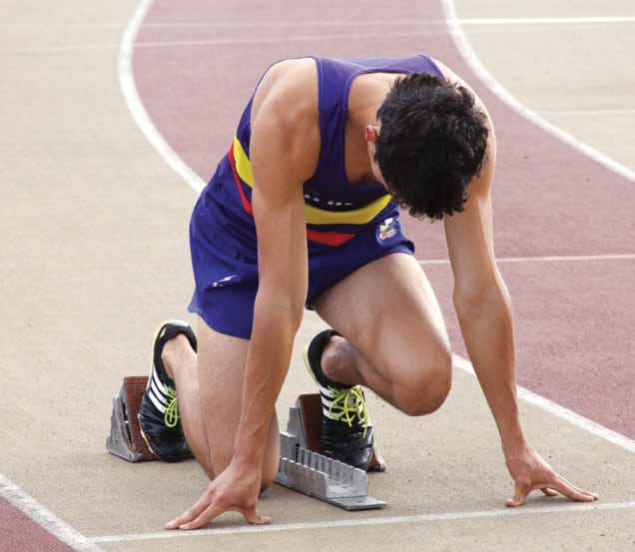Books about the physics of summer and winter sports, reviewed by Margaret Harris

Sporting questions answered
Is it easier to score with a penalty shot in football or in handball? How much of an advantage did elite swimmers gain by wearing the (now-banned) one-piece hydrophobic suits in competitions? And how can it be that headwinds are bad news for runners and long-jumpers but good for discus throwers? The answers to these questions and many more can be found in 100 Essential Things You Didn’t Know You Didn’t Know About Sport, a timely if somewhat unoriginal book by the veteran science writer and University of Cambridge mathematician John Barrow. Although the book will induce severe déjà vu among fans of Barrow’s writing – he has recycled its title, its format and at least one of its jokes from his 2008 book 100 Essential Things You Didn’t Know You Didn’t Know – the counter-argument “if it ain’t broke, don’t fix it” is a compelling one. As with its predecessor, each of the 100 “essentials” in Barrow’s latest book is explained in the form of an easily digestible essay on some topic related to physics, mathematics or both. A good example is #98 “Some Like It Hot”, in which Barrow draws on material from a post on the Engineering Sport blog to explain why trackside temperatures in the velodrome at the forthcoming Olympic Games will be kept at a cosy 25 °C. The key consideration, Barrow observes, is air drag. At 25 °C, air has a density of around 1.185 kg m–3, but at 20 °C, the density increases to 1.205 kg m–3. That may not sound like a big difference, and indeed even at a velocity of 20 m s–1 (a typical value for the “sprint finish” in many cycling events) the corresponding change in drag force amounts to around 1% of the total drag each cyclist experiences. But as Barrow repeatedly shows, small differences can have big effects on the record book, and over the 4 km distance of the pursuit event, raising the air temperature by 5 °C should knock about 1.5 s off the racers’ times. With most (though not all) of the essays focused on Olympic events, the book should prove popular among spectators this summer.
- 2012 Bodley Head £10.00hb 320pp
Some like it cold
If the current burst of media attention on summertime sport leaves you, well, cold, then Gliding for Gold: the Physics of Winter Sports may be the perfect antidote. Written by the science writer and former theoretical physicist Mark Denny, the book begins with a short introduction to the surprisingly complicated physics of ice. At the time of writing, Denny reports that materials scientists had identified at least 15 different forms of the stuff, and although nearly all of the ice on the Earth’s surface is of the relatively simple hexagonal-lattice type, its properties are still not fully understood. Despite our incomplete knowledge, though, it is still possible to make a number of interesting observations about sports played on icy surfaces. In the book’s first section, for example, Denny shows that speed skaters must move their bodies in ways that differ dramatically from those adopted by runners, thanks to the almost uniquely slippery nature of ice and the design of their skates. The pay-off is that the skaters are considerably speedier: the best of them can achieve average speeds of more than 14 m s–1 over a 500 m track – some 38% faster than Usain Bolt over 100 m. As for snow, our understanding of its behaviour is, if anything, even less complete; as Denny puts it, “to a physicist, snow is ice with complications”. For the most part, Denny deals with such complications by first creating “toy” models that ignore them, then introducing sliding friction, air resistance, athlete fatigue et al. to show how they affect the results of calculations. This is a classic physics trick, but Denny is careful not to push it into “assume a spherical cow” territory. Physicist readers will also appreciate the book’s appendices, which include a “technical notes” section containing detailed derivations of results presented earlier in the book.
- 2011 Johns Hopkins University Press £15.50/$30.00pb 200pp



